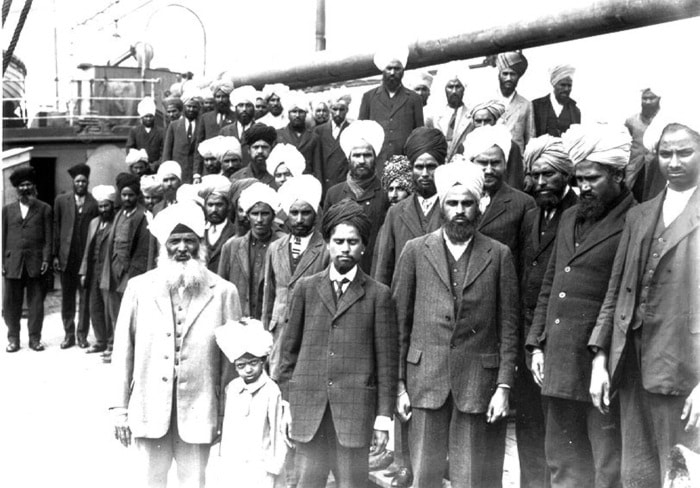It was on July 23, 1914 – a 100 years ago from yesterday – that the Komagata Maru ship was forced to leave Vancouver’s harbour. It had to return to India, a British colony at that time, with 355 passengers whose dreams of beginning a life in Canada were cut short.
On May 23, 1914, the ship had arrived at Burrard Inlet with 376 Indian passengers of various faiths on board. It had departed from Hong Kong and had stopped at Shanghai and Yokohama.
The 1908 Continuous Passage Act required that immigrants travel to Canada without stopping at any point on the way. It stated that: “immigrants may be prohibited from landing or coming into Canada unless they come from the country of their birth, or citizenship, by a continuous journey and on through tickets purchased before leaving the country of their birth, or citizenship.” This “continuous journey” requirement was clearly a discriminatory law created with the intention of preventing immigrants from places like India from coming to Canada, even though both countries were part of the British Empire. Additionally, it was the continuation of policies aimed at restricting rights, as legislation was passed in 1907 that prevented voting rights for South Asians and entry into politics and certain jobs.
 A number of further obstacles prevented the passengers from entering Canada and even a legal challenge was not successful. Despite the efforts of the passengers and a committee formed to help them, the ship was turned back.
A number of further obstacles prevented the passengers from entering Canada and even a legal challenge was not successful. Despite the efforts of the passengers and a committee formed to help them, the ship was turned back.
In September, the ship reached Budge-Budge, India, at which point, 19 passengers were killed by officers.
This tragic and sad moment in Canada’s history violated fundamental human rights. In 2008, a formal apology was issued by the government of British Columbia, and the prime minister issued an apology at an event in Bear Creek Park.
Remembering the Komagata Maru incident underscores a further point of importance: the need to explore and discuss historical issues so that similar incidents are not repeated in the future.
As we mark the centennial of this incident this year, it is important that we not only reflect on historical wrongs such as the Komagata Maru incident, Chinese head tax, and Japanese internment camps on anniversaries and centennials, but also on a regular basis.
Ultimately, the best way to learn from the past is to maintain our continued emphasis as Canadians on multiculturalism and a love for equality and tolerance. Canada’s progress in the past decades and our focus on embracing diversity has allowed us to build understanding and knowledge between people of different faiths, cultures, and backgrounds.
At the same time, we should ensure that government policies regarding immigration and citizenship, now and in the future, are closely scrutinized on a constant basis so we can ensure that Canada remains a welcoming country.
It is also important to note that the erosion of citizenship and immigration policies may not occur in the same overt fashion as occurred in 1914. Hence, close scrutiny as well as a focus on the intent behind policies is vital.
Japreet Lehal is a student at Simon Fraser University. He writes regularly for The Leader.
